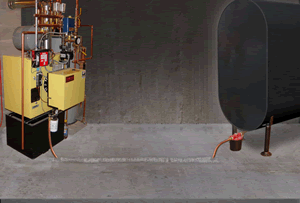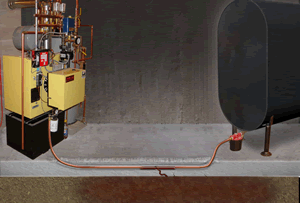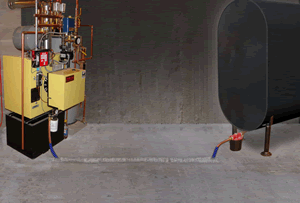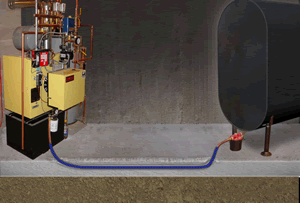Home → Waste Management → Programs → Aboveground Oil Storage Tanks → Home Heating Oil Tank Replacement Program → Are your buried oil lines protected?
Are your buried oil lines protected?

Surface view of an unprotected buried copper fuel line

Below grade view of a leaking unprotected buried copper fuel line

Surface view of a properly protected (sleeved) buried copper fuel line

Below grade view of a properly protected (sleeved) buried copper fuel line
Unprotected, buried lines can corrode, leading to an oil leak. Check to see if the line from your oil tank to the burner on your furnace or boiler that is buried in the floor of your basement has a sleeve on it. If it does not, then it must be replaced. Call your licensed oil burner technician.
Replacement lines can be run overhead or along the top of the basement floor if they are protected from physical damage. If you choose to run the replacement line overhead, then have your licensed oil burner technician check the distance from the oil tank to the burner, the number of bends and curves in the line, and the capacity of the fuel pump on the burner to assure the pump is adequately sized for the length of run.
Some people want the replacement line and it’s sleeve out of the way and buried in the floor. This is usually done by cutting a small trench in the concrete floor, installing the replacement line and it’s sleeve in the trench, and then filling the trench with grout. If this is the case make sure the ends of the sleeve extend 2” above the surface of the floor on both ends.